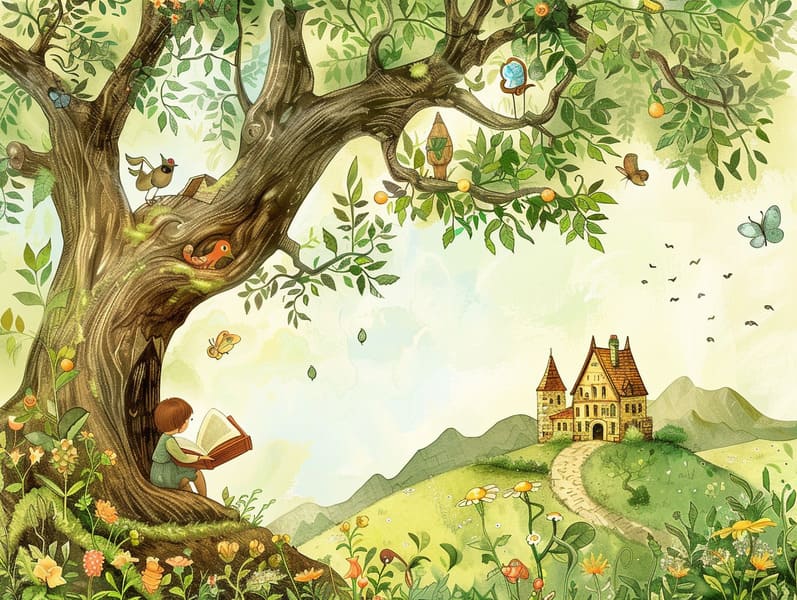Understanding the Legacy of Mythical Fairy Tales with Its Lasting Beauty.
Understanding the Legacy of Mythical Fairy Tales with Its Lasting Beauty.
Blog Article

Ancient fairy tales have ancient roots. These narratives have been passed down from one generation to the next well before they were ever put on paper. They developed from a variety of civilizations, including American traditions. They were initially disseminated among elders, often carrying themes and messages related to the societal norms and beliefs of the time.
The renowned Brothers Grimm, Jacob and Wilhelm Grimm, were among the first to gather many of these beloved fairy tales. Their published works, "Grimm's Children's Stories," included narratives like "Cinderella," "The Bread Crumb Trail," and "Little Snow White," which have since become hallmarks in the world of famous fairy tales. Similarly, the Danish author's enchanting fairy tales, such as "The Mermaid," and "The Duckling that Could," have won hearts worldwide, ensuring their place in the pantheon of beloved fairy tales.
Though they are old, these tales remain as important as ever, especially as bedtime stories for kids. These charming stories are now available in different formats, including richly illustrated books, whimsical animations, and internet fairy tales.
Their lasting appeal can be attributed to several magical reasons:
Important Morals: Timeless fairy tales often offer important moral lessons. Fairy tales like "The Tale of the Boy Who Cried Wolf" teach the importance of truth, while "The Tale of the Tortoise and the Hare" point out the merits of perseverance and modesty. These tales offer kids clear distinctions between correct and incorrect, helping to shape their moral compass in a tender yet lasting way.
Warmth and Understanding: Ancient fairy tales frequently present figures facing tests and troubles, stimulating listeners to empathize with their struggles and cheer for their triumphs. For instance, "Beauty's Beast" emphasizes the benefit of looking past the exterior to perceive the inner core of a character, cultivating warmth and insight.
Cultural Awareness: Many classic fairy tales are rich in the cultural contexts from which they arose. Learning from these narratives can provide informative snapshots into different backgrounds, building a sense of cultural respect and comprehension.
Imagination and Innovation: The fanciful elements in old fairy tales—enchanted forests—spark children’s fantasies. These stories carry readers to fantasy realms, engendering fantasy-filled thoughts and a sense of astonishment that endures a lifetime.
Old fairy tales are not only mesmerizing but also didactic. They serve as whimsical tools in cultivating various intellectual and emotional capacities in the young. When fairy tales are recited, they promote linguistic abilities by bringing new lexicon and elaborate sentence structures. This practice also enhances auditory skills and attentiveness, as young ones listen intently, ready to see what happens next.
Furthermore, debating the themes and characters of old fairy tales can cultivate thought processes and logical thinking. Young readers are guided to pinpoint patterns, anticipate outcomes, and awesome site figure out cause and effect. These deliberations also promote young ones express their thoughts and feelings, nurturing their emotional intelligence.
In today’s technological era, the presence of digital fairy tales has made these tales more accessible than ever. Online platforms and web apps offer large libraries of bedtime fairy tales that can be viewed or listened to anytime, anywhere. Fairy tales read aloud are particularly prevalent, featuring an captivating way for the young to relish these spellbinding stories. Sound books and read-aloud videos transport characters and settings to life, often paired with charming musical scores and harmonies that improve the narrative journey.
The lasting allure of ancient fairy tales lies in their ability to adapt to current times while keeping their central messages. Contemporary versions of these fairy tales often integrate more multicultural characters and modern settings, making them accessible to today’s audience. However, the underlying themes of fortitude, benevolence, and impartiality remain unchanged, continuing to influence audiences of all ages.
Traditional fairy tales also offer a sense of protection and knownness. They confer upon a well-arranged narrative with a obvious beginning, middle, and end, often wrapping up with the culmination of conflicts and the triumph of morality over immorality. This predictability can be soothing for young readers, sharing a sense of solidity in an fluid world.
Ancient fairy tales continue to enthrall and enlighten new generations, maintaining their captivation and applicability in modern society. As nighttime stories for kids, they make accessible a perfect blend of charm and understanding, supporting moral values, empathy, and creativity. The existence of internet fairy tales and the sought after status of fairy tales told out loud guarantee that these old stories remain accessible to new generations.
By conserving and making known these narratives, we continue to exalt the rich tapestry of fables and cultural heritage. Whether you are browsing a vividly illustrated book, discovering a cyber collection, or listening to an sound book, the charm of ancient fairy tales is always within reach. These fairy tales convey of the unwavering presence of fairy tales and its ability to unite us across epochs and places.
If you are perusing a artistically illustrated book, discovering a web-based collection, or listening via an read-aloud book, the beauty of famous fairy tales is always within reach.
These narratives emphasize of the continued influence of storytelling and its ability to unite us across eras and regions, establishing a link that enchants and educates alike.